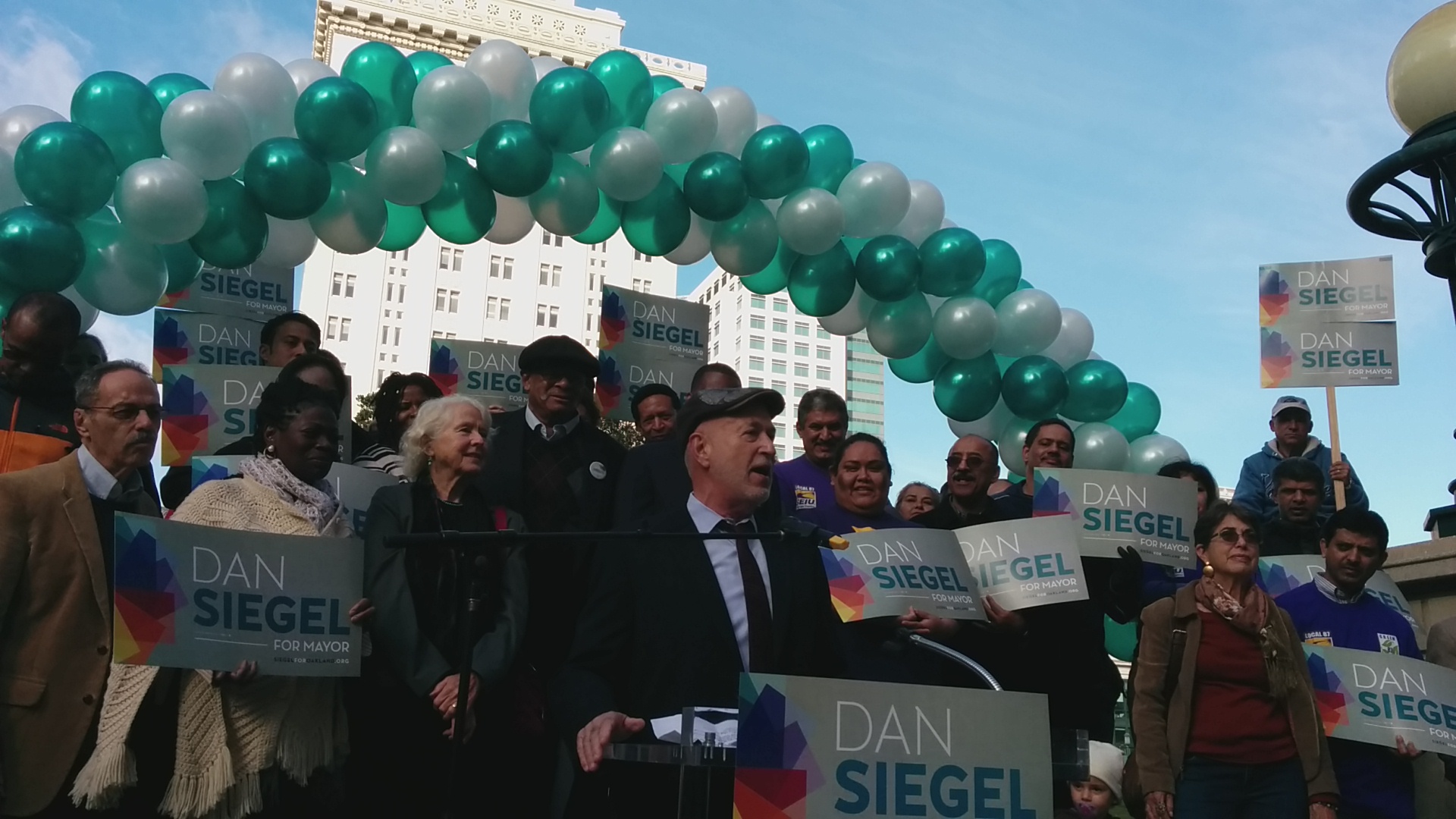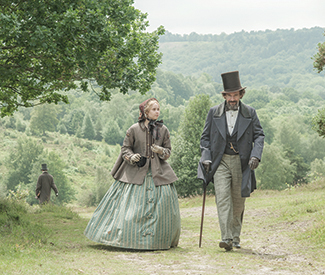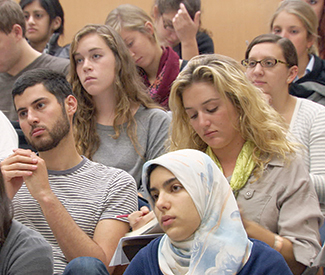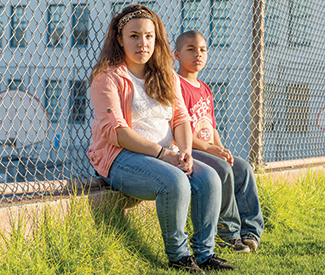Stage listings are compiled by Guardian staff. Performance times may change; call venues to confirm. Reviewers are Robert Avila, Rita Felciano, and Nicole Gluckstern. Submit items for the listings at listings@sfbg.com.
THEATER
OPENING
Avenue Q New Conservatory Theatre Center, 25 Van Ness, SF; www.nctcsf.org. $25-45. Previews Fri/6-Sat/7 and Dec 13, 8pm; Sun/8, 2pm. Opens Dec 14, 8pm. Runs Wed-Sat, 8pm; Sun, 2pm. Through Jan 12. New Conservatory Theatre Center performs the Tony-winning comedy.
A Christmas Carol Geary Theater, 415 Geary, SF; www.act-sf.org. $20-95. Opens Fri/6, 7pm. Runs Wed-Sat, 7pm (no evening shows Dec 24, 26, or 28; also Sat/7, Dec 11, 14, 21, 23, 2pm; Dec 24 and 26-28, 1pm; Dec 27 evening show at 5:30pm); Sun, 5:30pm (also Sun/8, Dec 15, and 22, 1pm). Through Dec 28. American Conservatory Theater mounts its annual production of the Dickens classic, with James Carpenter as Scrooge and Ken Ruta as Jacob Marley’s ghost.
Cinderella Buriel Clay Theater, African American Art and Culture Complex, 762 Fulton, SF; www.african-americanskaes.org. $12.50-50. Opens Sat/7, 3pm. Runs Sat, 8pm (also Dec 21, 3pm); Sun, 3pm. Through Dec 22. African-American Shakespeare Company presents this fairy-tale production for the holidays.
The Golden Girls: The XMAS Episodes Victoria Theatre, 2961 16th, SF; www.trannyshack.com. $30. Opens Thu/5, 8pm. Runs Thu-Sat, 8pm; Sun, 7pm. Through Dec 22. Inspired by the classic sitcom, Miami’s feisty seniors (portrayed by Heklina, Cookie Dough, Matthew Martin, and Pollo Del Mar) return to spread holiday cheer and cheesecake.
BAY AREA
Edward Gant’s Amazing Feats of Loneliness Ashby Stage, 1901 Ashby, Berk; www.shotgunplayers.org. $20-35. Previews Thu/5 and Dec 11-12, 7pm; Fri/6-Sat/7, 8pm; Sun/8, 5pm. Opens Dec 13, 8pm. Runs Wed-Thu, 7pm; Fri-Sat, 8pm; Sun, 5pm. Through Jan 11. Shotgun Players performs Anthony Neilson’s comic romp set in “a sensual Edwardian world of top hats, fantastical puppets, and flash powder.”
Little Women Lucie Stern Theatre, 1305 Middlefield, Palo Alto; www.theatreworks.org. $19-79. Previews Wed/4-Fri/6, 8pm. Opens Sat/7, 2 and 8pm. Runs Tue-Wed and Dec 30, 7:30pm (no shows Dec 24-25; Dec 31, show at 2pm only; no show Jan 1); Thu-Sat, 8pm (also Sat and Dec 26 and Jan 4, 2pm); Sun, 2 and 7pm. Through Jan 4. TheatreWorks performs the musical adaptation of the Louisa May Alcott tale.
Mame Hillbarn Theatre, 1285 East Hillsdale, Foster City; www.hillbarntheatre.org. $19-40. Previews Thu/5, 8pm. Opens Fri/6, 8pm. Runs Thu-Sat, 8pm (also Dec 14 and 21, 2pm); Sun, 2pm. Through Dec 22. Hillbarn Theatre performs Jerry Herman’s classic musical.
ONGOING
Amaluna Big Top at AT&T Park, Third Street at Terry A. Francois Blvd, SF; www.cirquedusoliel.com. $50-175. Check website for schedule, including special holiday showtimes. Through Jan 12. Cirque de Soleil is back in town, this time bringing its Tempest-inspired Amaluna to the big top set up outside AT&T Park. Touted for being a celebration of “women [sic] power,” it seems initially odd that the design elements are so focused on the male peacock feather — all greens and blues and graceful, with curving “fronds” rising up from the stage. Jungle sounds chirp in the background as a bevy of Amazonian women in bejeweled headdresses and a mischievous lizard-man circulate the room until the show starts with the lovely abstraction of a floating red cloud of translucent fabric dancing in a single beam of light. The flimsy plotline is forgettable, a coming-of-age and courtship tale between the island’s young princess, Miranda (Iuliia Mykhailova) and a shipwrecked young Romeo (Evgeny Kurkin), though the parallel courtship between the two comic figures of Jeeves (Nathalie Claude) and Deeda (Shereen Hickman) provides a bit of levity and a novel use for footballs. The most realized character is probably Cali (Victor Kee), the half-lizard, whose prehensile tail and neon body paint give him an otherworldly allure, but it’s the aerialist goddesses and fierce embodiments of the storm that are most memorable from an acrobatic point-of-view, and Lara Jacobs’ unique balancing act from a meditative one. (Gluckstern)
Arlington Magic Theatre, Fort Mason Center, 2 Marina, Bldg D, Third Flr, SF; www.magictheatre.org. $20-60. Wed/4-Sat/7, 8pm (also Wed/4, 2:30pm); Sun/8, 2:30pm. Magic Theatre performs Victor Lodato and Polly Pen’s world-premiere musical.
The Barbary Coast Revue Stud Bar, 399 Ninth St, SF; eventbrite.com/org/4730361353. $10-40. Wed, 9pm. Through Dec 18. Blake Wiers’ new “live history musical experience” features Mark Twain as a tour guide through San Francisco’s wild past.
The Book of Mormon Orpheum Theatre, 1192 Market, SF; www.shnsf.com. $60-120. Wed-Sat, 8pm (also Sat, 2pm); Sun, 1 and 6:30pm. Through Jan 19. When approaching the oeuvre of South Park creators Matt Stone and Trey Parker, it’s best to check your political correctness at the door. That’s certainly no less true of their 2011 Broadway musical The Book of Mormon, co-penned with Robert Lopez (of Avenue Q fame), despite the clean-scrubbed appearance of their fumbling albeit well-intentioned missionary protagonists. Sent to Uganda for two years, top mission pupil Elder Price (Nic Rouleau) and his clumsy but affable partner Elder Cunningham (A.J. Holmes) are faced with a village oppressed by a scenery-chewing warlord, a demoralized coterie of fellow missionaries who have yet to have a successful conversion, and their own fraught, odd-couple dynamic. Rouleau’s Price is an appropriate blend of smarm, charm, and secret self-doubt while Holmes excels in his portrayal of a perennial-loser-turned-prophet (his power ballad-esque solo in “Man Up” is one of the show’s best). Of their hosts, the wry Mafala (James Vincent Meredith) and his sweet but strong-willed daughter Nabulungi (Syesha Mercado) get the most stage time, but it’s the crude and caustic General (David Aron Damane) who grabs the most attention. The gleefully profane “Hasa Diga Eebowai,” a Forbidden Zone-style “Spooky Mormon Hell Dream”, and the deliriously blasphemous “Joseph Smith, American Moses,” round out the entertaining, and strangely informative, score. Though it’s (very) unlikely to convert you to the Church of Latter-Day Saints, there’s a good chance you’ll want to convert to the church of Parker and Stone, if you haven’t already. (Gluckstern)
BoomerAging: From LSD to OMG Marsh San Francisco, 1062 Valencia, SF; www.themarsh.org. $15-50. Tue, 8pm. Extended through Dec 17. Will Durst’s hit solo show looks at baby boomers grappling with life in the 21st century.
Foodies! The Musical Shelton Theater, 533 Sutter, SF; www.foodiesthemusical.com. $32-34. Fri-Sat, 8pm. Open-ended. AWAT Productions presents Morris Bobrow’s musical comedy revue all about food.
The Gershwins’ Porgy and Bess Golden Gate Theatre, One Taylor, SF; www.shnsf.com. $60-210. Wed/4-Sat/7, 8pm (also Sat/7, 2pm); Sun/8, 2pm. The Tony-winning Broadway revival launches its national tour in San Francisco.
Hedwig and the Angry Inch Boxcar Theatre, 505 Natoma, SF; www.boxcartheatre.org. $27-43. Thu-Sat, 8pm. Open-ended. John Cameron Mitchell’s cult musical comes to life with director Nick A. Olivero’s ever-rotating cast.
Ideation Tides Theater, 533 Sutter, SF; www.sfplayhouse.org. $10-20. Fri/6-Sat/7, 8pm (also Sat/7, 3pm). Next up in the San Francisco Playhouse “Sandbox Series” is this dark comedy from Aaron Loeb.
The Jewelry Box: A Genuine Christmas Story The Marsh San Francisco, 1062 Valencia, SF; www.themarsh.org. $15-40. Fri, 8pm; Sat, 5pm. Through Dec 28. Brian Copeland performs the world premiere of his new, holiday-themed work, an Oakland-set autobiographical tale that’s a prequel to his popular Not a Genuine Black Man.
My Beautiful Launderette New Conservatory Theatre Center, 25 Van Ness, SF; www.nctcsf.org. $25-45. Wed-Sat, 8pm; Sun, 2pm. Through Dec 22. New Conservatory Theatre Center performs Andy Gram and Roger Parsley’s adaptation of Hanif Kureishi’s award-winning screenplay.
The Oy of Sex Marsh San Francisco, 1062 Valencia, SF; www.themarsh.org. $20-100. Thu-Fri, 8pm; Sat, 8:30pm. Through Jan 18. Comedian Alicia Dattner performs her solo show, based on her stories from her own life and love addiction.
Peter/Wendy Gough Street Playhouse, 1620 Gough, SF; www.custommade.org. $15-33. Thu-Sat, 8pm; Sun, 7pm. Through Dec 15. J.M. Barrie’s familiar and much-revisited children’s story, about a boy who refuses to grow up, has always had its darker aspects, including the violent streak in its hero, forever-child Peter (Sam Bertken). Unfortunately, any underlying social or psychological complexity in the story — originally published in 1902 in The Little White Bird — is of no consequence in adapter-director Jeremy Bloom’s relentlessly cheerful and quickly monotonous retelling. The production, which narrates and acts out the story in somewhat condensed form, says it’s designed for adults of all ages and children over 12, but it seems pitched to an audience much younger still. Custom Made Theater’s lackluster staging does little to make the time go faster. There’s a mischievous energy in Bertken’s Peter and a bright intelligence in Anya Kazimierski’s Tinker Bell that together produce the play’s only emotional heat, but it’s fleeting. As Wendy, Elissa Beth Stebbins is generally solid but too mild to elicit much sympathy for her unrequited affections for Peter. Clad exclusively in striped jammies, the uneven ensemble (which also includes Terry Bamberger, Jessica Rudholm, Kim Saunders, and Jeunee Simon in multiple roles) rarely encourages focus on the finer points of character and plot, which anyway come with a soporific dose of trifling detail amid generally awkward physical choreography. Indeed, any “happy thoughts” one walks in with would risk vanishing entirely, were it not that the cast harvests them immediately and writes them down for future reference on the stage floor. (Avila)
Snoopy!!! Eureka Theatre, 215 Jackson, SF; www.42ndstmoon.org. $25-75. Wed-Thu, 7pm; Fri, 8pm; Sat, 6pm (family/student matinee Sat/7, 1pm); Sun, 3pm. Through Dec 15. 42nd Street Moon performs the sequel to You’re a Good Man, Charlie Brown.
Urge For Going Z Below, 470 Florida, SF; www.goldenthread.org. $10-45. Thu/5-Sat/7, 8pm; Sun/8, 3pm. Jamila (Camila Betancourt Ascencio) is a bright student desperate to pass her college entrance examination — an unexceptional proposition in many places, but Jamila is a Palestinian raised in a Lebanese refugee camp. For her, even the right to take such an exam is in no way guaranteed and must be fought for. That Jamila’s struggles don’t end at the front door of her crowded home provides the basis for the drama in Mona Mansour’s 2011 play, Urge for Going, now receiving an uneven but sometimes moving West Coast premiere from Golden Thread (which last year produced The Letter, a short play co-written by Mansour, as part of its ReOrient Festival). Amid the makeshift walls, mismatched furniture, and exposed wiring of Kate Boyd’s evocative scenic design, Jamila lives with her austere father (Terry Lamb), a onetime literature scholar with a passion for Wordsworth; her supportive mother (Tara Blau); her father’s effusive loose-canon of a brother (Julian Lopez-Morillas); her mother’s brother (Munaf Alsafi); and her own big-hearted but haunted older brother (Wiley Naman Strasser), a once brilliant math student who suffered brain damage at the hands of a Lebanese soldier. But front and center is her father, whose barely cloaked disappointment and despair turn to recalcitrance and outright antagonism in the face of Jamila’s too-pointed desire to flee this hobbled world of exile for a wider world of possibilities. Directed by Evren Odcikin, the play’s sentimental naturalism (broken through at times by didactic direct address to the audience by the entire cast) makes what follows both too predictable and somewhat artificial. At the same time, Mansour carefully and revealingly couches her story in the political and existential limbo of multiple generations of Palestinian refugees in Lebanon, deprived for over half a century of basic rights amid cramped poverty and deprivation. (Avila)
BAY AREA
A Bright New Boise Aurora Theatre, 2081 Addison, Berk; www.auroratheatre.org. $32-50. Wed/4-Sat/7, 8pm; Sun/8, 2 and 7pm. Faith can be a touchy subject among true believers and skeptics alike, and as long as the topic of religion is avoided (as it often is) you might not even know that your bus driver is Buddhist, or your checkout clerk born again. In Samuel D. Hunter’s A Bright New Boise, now playing at Berkeley’s Aurora Theatre, the line blurs between public face and private faith, as mysterious stranger Will (Robert Parsons) rolls into Boise and takes up employment at the Hobby Lobby, ostensibly to reconnect to his long-lost, given-up-for-adoption son, Alex (Daniel Petzhold). But when Will is revealed to be a former member of a disgraced Evangelical sect from “up North,” his sudden reappearance in Alex’ life appears to be motivated not by a long-standing remorse, but by a recent unmooring. Under Tom Ross’ direction, the other characters — a foul-mouthed store manager (Gwen Loeb), a painfully shy stock clerk (Megan Trout), and a confrontational sales associate (Patrick Russell) — appear similarly unmoored, careening into each other like jittery, neurotic pinballs, with about as much consideration. Only Parsons’ Will appears calm and deliberate in his actions, until he startlingly demonstrates otherwise. It’s an abrupt end to both the play and Will’s charade of normalcy, and neither Hunter nor Ross seem to know how to build up to his eventual fall naturally, ultimately allowing him to be defined only by his fanaticism rather than his humanity. (Gluckstern)
Can You Dig It? Back Down East 14th — the 60s and Beyond Marsh Berkeley, 2120 Allston, Berk; www.themarsh.org. $15-50. Sat, 8:30pm; Sun, 7pm. Extended through Dec 15. Don Reed’s new show offers more stories from his colorful upbringing in East Oakland in the 1960s and ’70s. More hilarious and heartfelt depictions of his exceptional parents, independent siblings, and his mostly African American but ethnically mixed working-class community — punctuated with period pop, Motown, and funk classics, to which Reed shimmies and spins with effortless grace. And of course there’s more too of the expert physical comedy and charm that made long-running hits of Reed’s last two solo shows, East 14th and The Kipling Hotel (both launched, like this newest, at the Marsh). Can You Dig It? reaches, for the most part, into the “early” early years, Reed’s grammar-school days, before the events depicted in East 14th or Kipling Hotel came to pass. But in nearly two hours of material, not all of it of equal value or impact, there’s inevitably some overlap and indeed some recycling. Reed, who also directs the show, may start whittling it down as the run continues. But, as is, there are at least 20 unnecessary minutes diluting the overall impact of the piece, which is thin on plot already — much more a series of often very enjoyable vignettes and some painful but largely unexplored observations, wrapped up at the end in a sentimental moral that, while sincere, feels rushed and inadequate. (Avila)
Harvey Barn Theatre, 30 Sir Francis Drake, Ross; www.rossvalleyplayers.com. $10-22. Thu, 7:30pm; Fri-Sat, 8pm; Sun, 2pm. Through Dec 15. Ross Valley Players perform the Pulitzer-winning play by Mary Chase.
A Little Princess Julia Morgan Theater, 2640 College, Berk; www.berkeleyplayhouse.org. $17-60. Thu/5-Fri/6, 7pm; Sat/7, 1 and 6pm; Sun/8, noon and 5pm. Berkeley Playhouse opens its sixth season with Brian Crawley and Andrew Lippa’s musical adaptation of the Frances Hodgson Burnett story.
110 in the Shade Douglas Morrison Theatre, 22311 N. Third St, Hayward; www.dmtonline.org. $10-29. Thu/5-Sat/7, 8pm (also Sat/7, 2pm); Sun/8, 2pm. Douglas Morrison Theatre performs N. Richard Nash’s romantic musical, adapted from his classic play The Rainmaker.
The Pianist of Willesden Lane Berkeley Repertory Theatre, Thrust Theatre, 2015 Addison, Berk; www.berkeleyrep.org. $29-89. Tue and Thu-Sat, 8pm (also Thu/5 and Sat, 2pm; no shows Dec 24 or 31); Wed and Sun, 7pm (also Sun, 2pm; matinees only Dec 15, 22, and Jan 5; no show Dec 25). Extended through Jan 5. Mona Golabek stars in this solo performance inspired by her mother, a Jewish pianist whose dreams and life were threatened by the Nazi regime.
Troilus and Cressida La Val’s Subterranean, 1834 Euclid, Berk; www.impacttheatre.com. $10-25. Thu-Sat, 8pm; Sun, 7pm. Through Dec 15. One of Shakespeare’s more difficult and under-produced plays, Troilus and Cressida does wax in popularity during protracted times of war, so it’s about the right time for Impact Theatre to tackle it. Set during the seventh year of the Trojan War, the players are all either soldiers or spoils of war, and both morale and morals are at a low ebb. So-called heroes hide in their tents, the fair Helen (Julie Kuwabara) is a callow bawd, and everyone just wants the war to be over. Troilus (Eric Kerr), a Trojan, and Cressida (Sarah Coykendall), a Greek, meet-cute thanks to the machinations of the flamboyant Pandarus (Shawn J. West), only to be quickly separated by circumstances beyond their control, and thrust abruptly to the sidelines of their own tragedy, their eventual betrayal of each other lost within the greater treacheries of the battlefield. It’s a problematic script, not least of all because the only truly moral character is the very innocent, very mad Cassandra (Akemi Okamura), whose prophecies are written off as mere ravings, subtly mirrored by the nihilistic fool, Thersites (Miyaka Cochrane), who delivers his frontline ravings as prophecies. Director Melissa Hillman makes some bold choices, however, including casting Lauren Spencer as the level-headed Ulysses, and father-son team Jon Nagel and Jonah McClellan as Aeneas and Antenor, turning the walk-on role of a pawn into a tragic symbol of war’s all too-human cost. (Gluckstern)
PERFORMANCE/DANCE
“Broadway Bingo” Feinstein’s at the Nikko, Hotel Nikko, 222 Mason, SF; www.feinsteinssf.com. Wed, 7-9pm. Ongoing. Free. Countess Katya Smirnoff-Skyy and Joe Wicht host this Broadway-flavored night of games and performance.
“Buddy Club Children’s Shows” Randall Museum Theater, 199 Museum Wy, SF; www.thebuddyclub.com. Sun, 11am-noon. $8. “The Bubble Lady!” performs.
“Comedy Bottle with Kurtis Matthews” Purple Onion at Kells, 530 Jackson, SF; www.purpleonionatkells.com. Fri/6-Sat/7, 7pm. $15. Stand-up comedy.
“Comedy Returns to El Rio!” 3158 Mission, SF; www.brownpapertickets.com. Mon/9, 8pm. $7-20. Stand-up with Marga Gomez, Sammy Obeid, Bob McIntyre, Kevin Young, and Lisa Geduldig.
CounterPULSE 1310 Mission, SF; www.counterpulse.org. Wed/4, 8pm: Risa Jaroslow’s NYC and the Bay: Dancers and Dances from Then and There and Here and Now, free. Fri/6-Sat/7, 8pm: Keith Hennessy, Hana Lee Erdman, and Jassem Hindi’s ALMOST, Enemy in the Figure, and These children singing in stones, $15-20. Dec 12-15, 8pm: Mica Sigourney, John Foster Cartwright, and Maryam Rostami’s Nicole Kidman is Fucking Gorgeous, $20.
“Dolores: The Temporary Life of a 220-Year-Old Bionic Woman” Stage Werx Theater, 446 Valencia, SF; www.stagewerx.org. Dec 10-11, 7:30pm. $15-20. On a bare floor, physical theater maker Carolina Duncan, as her Colombian grandmother, pops opens her cranium like a steamer trunk and retrieves the scrapbook of a boundless life. Here memory and imagination exist in equal measures, as Duncan traces key moments and fleeting images from an arc of days defined by family, romance, and at least one titanic battle between an Amazonian dinosaur and a new secret-agent boyfriend. Combining mime, scattered dialogue, physical comedy, and a live soundscape, this loving and whimsical homage comes gracefully delivered and almost always vividly expressed. All the while, Duncan (a graduate of SF’s Clown Conservatory and James Donlon and Leonard Pitt’s Flying Actor Studio) exudes an infectious enthusiasm for her subject, who proves as alive in a passing but concrete image of first childhood steps as she does in her final outing, a prolonged spacewalk into the familiar and unknown. Note: review from an earlier run of this show. (Avila)
“Encuentro de Canto Popular” Brava Theater Center, 2781 24th St, SF; accionlatina.org/Encuentro2013. Sat/7, 7pm. $19. Music festival dedicated to the nuevo canción movement; this year’s theme, “Pasado y Futuro,” pays tribute to artists who have passed away, as well as artists on the rise.
“Fiesta Navidena” Peña Pachamama, 1630 Powell, SF; www.carolinalugo.com. Sat/7, Dec 15, 21-22, and 27-28, 6:15pm. $15-21. Carolina Lugo and Carolé Acuña’s Ballet Flamenco performs a holiday show.
“Get Your Life Unity Mini Ball” Dance Mission Theater, 3316 24th St, SF; www.dancemission.com. Sat/7, 7pm. $10. Dancing, vogueing, and other aspects of ballroom culture take the stage.
“Glide Annual Holiday Festival: Celebrate50” War Memorial Opera House, 301 Van Ness, SF; www.glide.org. Wed/4, 7pm. $65-250. Maya Angelou, Judith Hill, Tom Johnston, and other luminaries lead this evening honoring Janice Mirikitani and Rev. Cecil Williams’ 50 years at Tenderloin community beacon Glide.
“Hand to Mouth Comedy” Dark Room, 2263 Mission, SF; www.handtomouthcomedy.com. Fri/6, 10pm. $8. Comedians Kellan Erksine, Kelly Anneken, Jules Posner, and others join host Trevor Hill in presenting all-new material on one specific topic: “fantasy.”
“Hysterical Historical San Francisco, Holiday Edition” Shelton Theater, 533 Sutter, SF; www.sheltontheater.org. Sun, 7pm. Through Dec 29. $30-40. Comic Kurt Weitzman performs.
“I Eat People Like YOU For Breakfast!” Marsh, 1062 Valencia, SF; www.themarsh.org. Wed/4, 7:30pm. $10-15. Comedian Steven Alan Green performs his solo show inspired by Jerry Lewis.
“The Jewish Nutcracker” Theater at Children’s Creativity Museum, 221 Fourth St, SF; www.jewishnutcracker.com. Fri/6-Sun/8, 2pm (also Fri/6-Sat/7, 6:30pm). $18-32. The Hanukkah story is interpreted via authentic cultural dance from Spain, India, China, Russia, and more.
“Mark Foehringer’s Nutcracker Sweets” Southside Theater, Fort Mason Center, Marina at Laguna, SF; www.brownpapertickets.com. Sat/7-Sun/8, Dec 14-15, Dec 20-24, 11am and 2pm (also Dec 14-15 and Dec 21-22, 4pm). $18-28. Contemporary ballet company Mark Foehringer Dance Project SF performs its fifth annual production of this Nutcracker-inspired work aimed at families with young children.
“The Metrics of Intimacy” Garage, 715 Bryant, SF; www.brownpapertickets.com. Wed/4-Thu/5, 8pm. $10-20. Contemporary dance performers Hope Mohr and Christian Burns collaborate with visual designer David Szlasa.
“Mine” Joe Goode Annex, 401 Alabama, SF; www.rawdance.org. Fri/6-Sun/8 and Dec 11-15, 8pm. $21-25. RAWdance performs a world premiere by company founders Ryan T. Smith and Wendy Rein.
“Okeanos Intimate” Aquarium of the Bay, Pier 39, SF; www.capacitor.org. Sat, 8pm. $20-30 (free aquarium ticket with show ticket). Extended through Dec 28. Choreographer Jodi Lomask and her company, Capacitor, revive 2012’s Okeanos — a cirque-dance piece exploring the wonder and fragility of our innate connection to the world’s oceans — in a special “intimate” version designed for the mid-size theater at Pier 39’s Aquarium of the Bay. The show, developed in collaboration with scientists and engineers, comes preceded by a short talk by a guest expert — for a recent Saturday performance it was a down-to-earth and truly fascinating local ecological history lesson by the Bay Institute’s Marc Holmes. In addition to its Cirque du Soleil-like blend of quasi-representational modern dance and circus acrobatics — powered by a synth-heavy blend of atmospheric pop music — Okeanos makes use of some stunning underwater photography and an intermittent narrative that includes testimonials from the likes of marine biologist and filmmaker Dr. Tierney Thys. The performers, including contortionists, also interact with some original physical properties hanging from the flies — a swirling vortex and a spherical shell — as they wrap and warp their bodies in a kind of metamorphic homage to the capacity and resiliency of evolution, the varied ingenuity of all life forms. If the movement vocabulary can seem limited at times, and too derivative, the show also feels a little cramped on the Aquarium Theater stage, whose proscenium arrangement does the piece few favors aesthetically. Nevertheless, the family-oriented Okeanos Intimate spurs a conversation with the ocean that is nothing if not urgent. (Avila)
“One Man Band Extravaganza” Great Star Theater, 636 Jackson, SF; www.jordanbwilson.com. Sat/7, 8pm. $5. One-man bands, including Jordan B. Wilson, One Man Banjo, Shovelman, Slow Poisoner, and Cello Joe, perform.
“La Posarela” Brava Theater Center, 2781 24th St, SF; www.sfcmc.org. Sun/8, 1 and 5pm. $7. Community Music Center presents a Mexican Christmas musical tailored to the Mission.
“Point Break Live!” DNA Lounge, 373 11th St, SF; www.dnalounge.com. Fri/6 and Jan 3, Feb 7, March 7, and April 4, 7:30 and 11pm. $25-50. Dude, Point Break Live! is like dropping into a monster wave, or holding up a bank, like, just a pure adrenaline rush, man. Ahem. Sorry, but I really can’t help but channel Keanu Reeves and his Johnny Utah character when thinking about the awesomely bad 1991 movie Point Break or its equally yummily cheesy stage adaptation. And if you do an even better Keanu impression than me — the trick is in the vacant stare and stoner drawl — then you can play his starring role amid a cast of solid actors, reading from cue cards from a hilarious production assistant in order to more closely approximate Keanu’s acting ability. This play is just so much fun, even better now at DNA Lounge than it was a couple years ago at CELLspace. But definitely buy the poncho pack and wear it, because the blood, spit, and surf spray really do make this a fully immersive experience. (Steven T. Jones)
“A Renaissance Christmas” St. Gregory of Nyssa Episcopal, 500 De Haro, SF; www.baychoralguild.org. Sat/7, 8pm. $5-25. Bay Choral Guild performs “familiar and unusual” Advent, Christmas, and Epiphany music.
“San Francisco Magic Parlor” Chancellor Hotel Union Square, 433 Powell, SF; www.sfmagicparlor.com. Thu-Sat, 8pm. Ongoing. $40. Magic vignettes with conjurer and storyteller Walt Anthony.
“she’s near she’s now she’s nowhere” Margaret Jenkins’ Dance Lab, 301 Eighth St, Studio 200, SF; www.funschdance.org. Thu/5, 7pm. Free. Also Fri/6, 8pm and Sat/7, 2pm, free, Studio LP, ODC Theater, 3153 17th St, SF; and Sun/8, 3pm, Feintech Studio, ODC Dance Commons, 351 Shotwell, SF. Christy Funsch’s trio/quintet “reveals the impact of a mover on spaces by playing with her presence and absence from them.”
“Shine! Our Brightest Holiday Show Ever!” War Memorial Opera House, 301 Van Ness, SF; www.sfgmc.org. Fri/6, 8pm. $25-75. The San Francisco Gay Men’s Chorus performs season favorites and “outrageous surprises.”
“Soul+Mates” Z Space, 450 Florida, SF; www.zspace.org. Wed/4-Sat/7, 8pm (also Sat/7, 2pm). $22-25. Printz Dance Project presents the world premiere of an immersive dance performance, photography exhibit, and short film exploring the concept of soul mates.
“The Velveteen Rabbit” Yerba Buena Center for the Arts, Lam Research Theater, 700 Howard, SF; www.odcdance.org. Thu/5-Fri/6 and Dec 12-13, 11am; Sat/7 and Dec 15, 1 and 4pm; Sun/8 and Dec 15, 2pm. $20-75. ODC/Dance performs its popular holiday show, directed with fresh perspective this year by ODC founder Brenda Way.
“Zambomba Gitana!” Brava Theater Center, 2781 24th St, SF; www.bayareaflamenco.org. Fri/6, 8pm. $25-65. Also Sat/7, 8pm, $25-45, La Peña Cultural Center, 3105 Shattuck, Berk; and Sun/8, 6pm, $25-45, Kuumbwa Jazz Center, 320 Cedar, Santa Cruz. Traditional flamenco holiday celebration, with artists from Jerez de la Frontera, Spain.
BAY AREA
“Buddy Club Children’s Shows” JCC of the East Bay Theater, 1414 Walnut, Berk; www.thebuddyclub.com. Sun/8, 11am-noon. $8. Comedy improv with Kenn Adams Adventure Theater. Also Sun/8, 11am-12:30pm, $8, Kanbar Center for the Performing Arts Theater, 200 North San Pedro, San Rafael; www.thebuddyclub.com. The Juggling Genius, Daniel DaVinci, performs.
“Following the Wrong God Home” Osher Studio in the Arts Passage of Berkeley Central, 2055 Center, Berk; www.brownpapertickets.com. Sat/7 and Dec 16, 8pm; Sun/8, 5pm. $15-25. Company 212 presents a physical theater piece choreographed and directed by MaryBeth Cavanaugh that imagines six Shakespeare characters on alternate journeys beyond the plays they appear in.
“Noel, Noel” First Congregational Church, 2345 Channing, Berk; www.cityboxoffice.com. Fri/6, 8pm. $18-65. The San Francisco Girls Chorus performs “Carol of the Bells” and other holiday favorites.
“Oakland Interfaith Gospel Choir 28th Annual Holiday Concert” Paramount Theatre, 2025 Broadway, Oakl; www.oigc.com. Sat/7, 7:30pm. $12-42. The choir performs its popular annual concert, led by director Terrance Kelly and featuring guests Tuck and Patti, and Imani Ya Watume Liturgical Dance Company.
“Once Upon a Christmas” Lesher Center for the Arts, Hoffman Theatre, 1601 Civic, Walnut Creek; www.leshercenter.org. Fri/6-Sat/7, 7:30pm (Sat/7, 2pm). $20-25. Lareen Fender’s Ballet Joyeux performs.
“The Shout: Life’s True Stories” Grand Lake Coffee House, 440 Grand, Oakl; www.theshoutstorytelling.com. Mon/9, 7:30pm. $5-20. Live storytelling event featuring 10-minute true tales.
“XXmas: The Christmas Ballet, 2013 Edition” Mountain View Center for the Performing Arts, 500 Castro, Mtn View; www.smuinballet.org. Dec 11-14, 8pm (also Dec 14, 2pm); Dec 15, 2pm, $49-65. Also Dec 18-28, $24-64, Yerba Buena Center for the Arts, Lam Research Theater, 700 Howard, SF. Smuin Ballet’s annual holiday show boasts festive ballet, tap, and swing-dance numbers. *





 “Our volunteers are crucial to our mission and on average help us in sorting, bagging, gleaning, and boxing food. They on average help to sort over 1 million pounds (of food) per month,” Volunteer Services Manager Sean Rosas told us. “Heading into January, the Food Bank isn’t as top of mind for people as it was during November and December. We have lots of empty shifts on our calendar.”
“Our volunteers are crucial to our mission and on average help us in sorting, bagging, gleaning, and boxing food. They on average help to sort over 1 million pounds (of food) per month,” Volunteer Services Manager Sean Rosas told us. “Heading into January, the Food Bank isn’t as top of mind for people as it was during November and December. We have lots of empty shifts on our calendar.”






